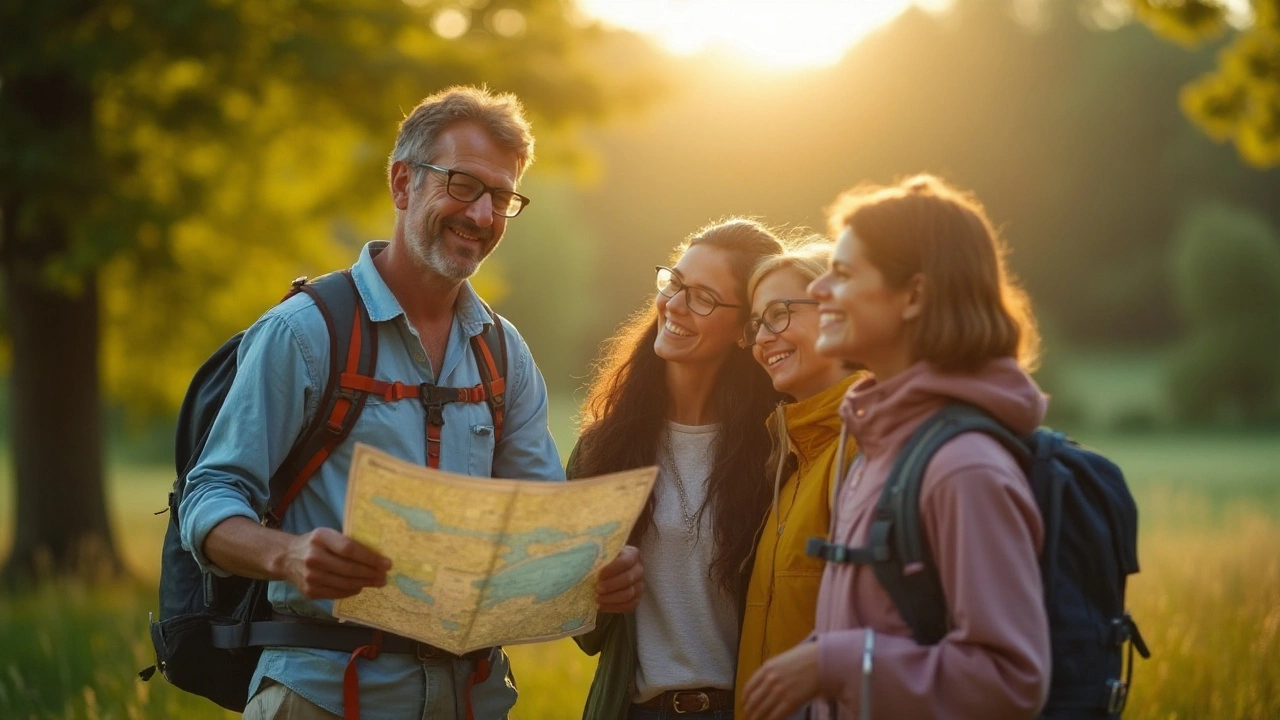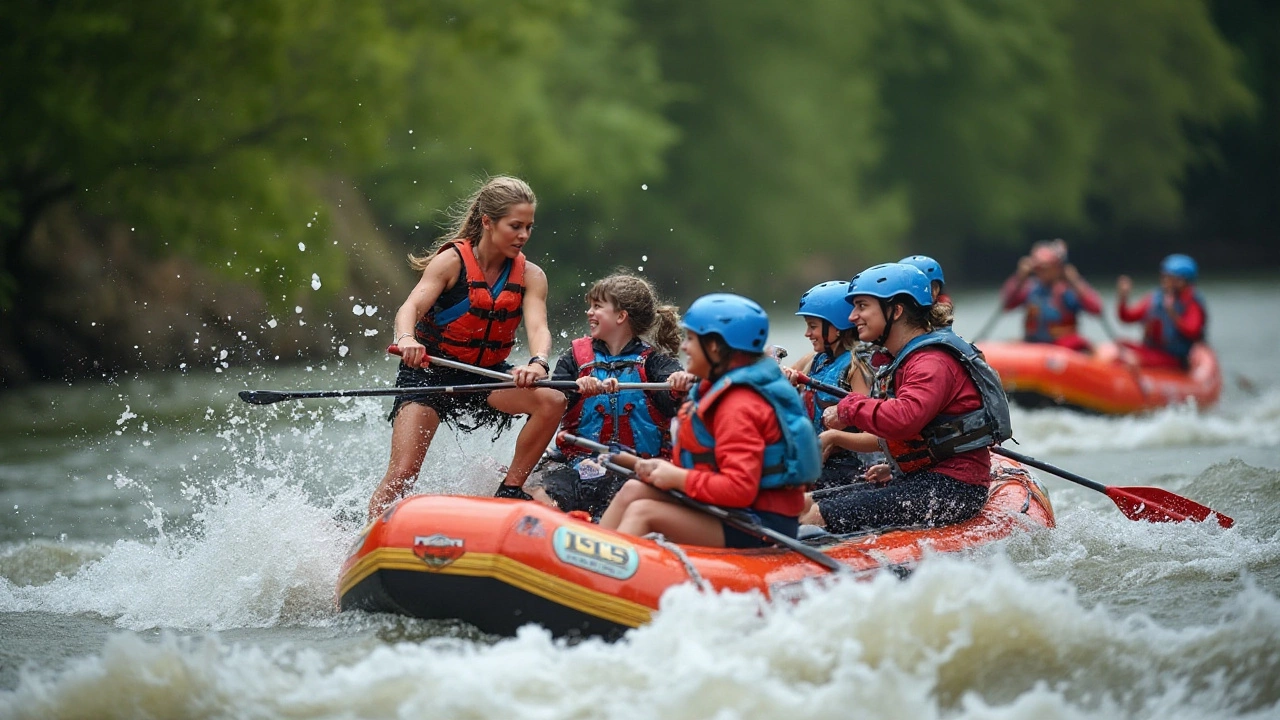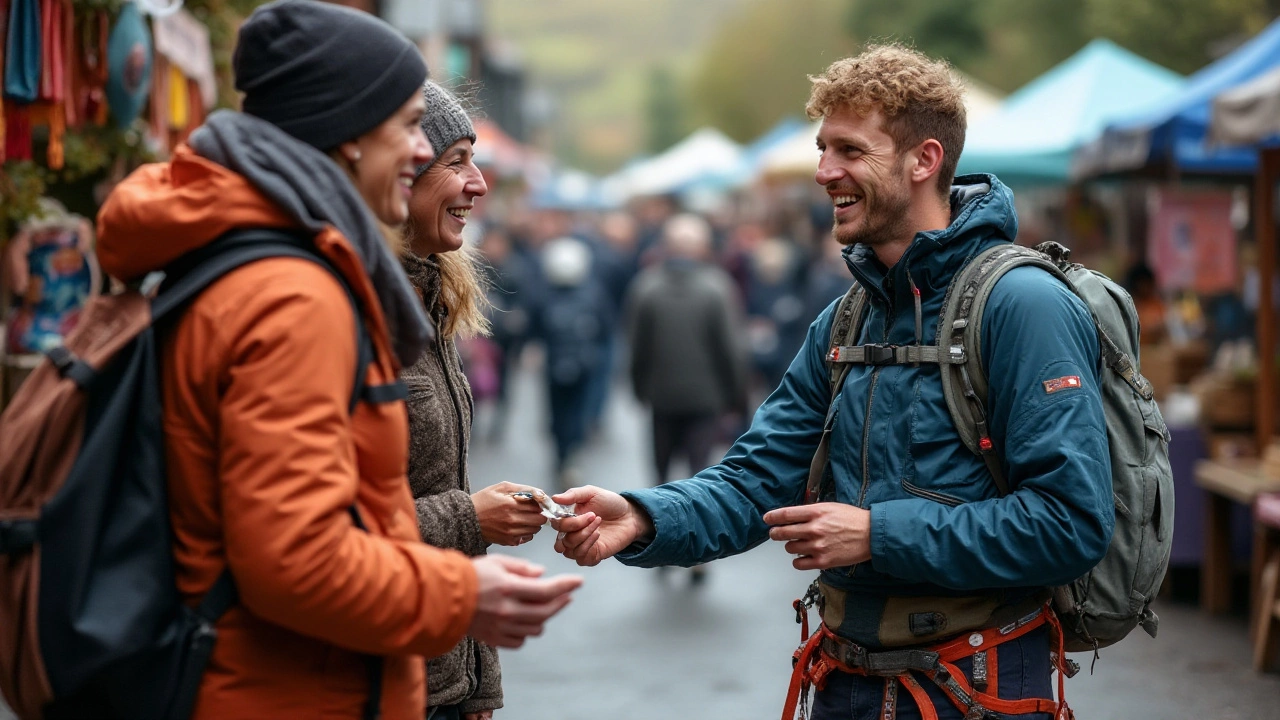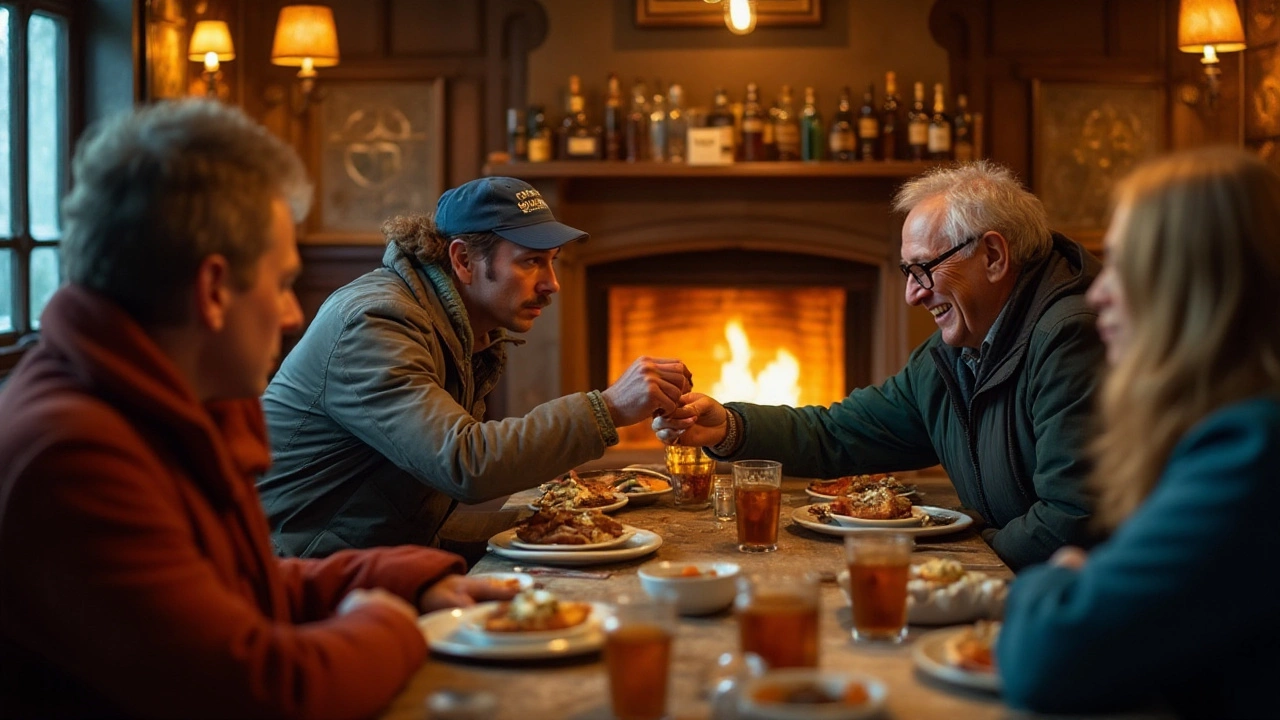How Much Should You Tip Your Adventure Guide? A Complete Guide
 Nov, 24 2024
Nov, 24 2024
Tipping in the world of adventure holidays is a subject that often sparks a lot of questions among travelers. Many adventurers find themselves pondering over how much to tip their guides after an exhilarating and potentially life-changing experience. With varying norms and expectations, knowing how much is too little or too much can sometimes feel like a balancing act.
Whether you've just tackled a challenging hike, navigated a thrilling river, or been awed by breathtaking natural wonders with your guide's help, showing appreciation through a tip is usually a gesture welcomed by guides worldwide. This article will help demystify the etiquette and suggest guidelines that can be tuned to fit your unique travel experience. Let’s dive into the intricacies of adventure guide tipping and find a comfortable space between gratitude and reason.
- Understanding the Role of an Adventure Guide
- Determining the Right Tip Amount
- Cultural Considerations Across Different Destinations
- Tipping Etiquette Tips for First-Time Adventurers
Understanding the Role of an Adventure Guide
An adventure guide is more than just a leader on the trail; they are the heartbeat of any outdoor expedition. These individuals bring a wealth of knowledge that transforms a normal trip into an unforgettable experience. From the moment your adventure begins, a guide is prepared to take on a multitude of roles. They not only navigate tricky terrains and ensure safety but also share captivating stories and cultural insights that enrich the journey.
Adventure guides are often innately passionate about the natural world and possess extensive training in outdoor survival. They are well-prepared to handle any unforeseen circumstances, whether it's a sudden weather change, wildlife encounters, or even minor medical emergencies. Their expertise in these areas is vital, particularly when exploring less-traveled paths where conditions can be unpredictable. In their hands, safety and security are prioritized without compromising the spirit of adventure.
According to renowned adventurer Bear Grylls, "A good guide makes the wild seem less daunting and more like a second home."
Such words highlight the balance guides maintain between encouraging excitement and ensuring well-being. They also serve as intermediators between the traveler and the environment, encouraging respect and understanding of local cultures and ecosystems.Moreover, guides often have deep personal connections with the regions they work in, allowing travelers a more authentic interaction with the landscape and its people.
When embarking on an adventure holiday, it's easy to forget the preparation guides undergo before you even arrive. Extensive checks and logistical arrangements are customary to ensure the trip runs smoothly. Most guides undergo rigorous certification processes and participate in continuous training to stay updated on safety protocols. Their multifaceted responsibilities require a rare combination of hard and soft skills, from culinary talents when preparing meals on a camping tour to storytelling prowess that brings history to life.
Ultimately, the role of an adventure guide blends professionalism with personal passion, offering travelers not just a service but a companionate commitment to making memories that will last a lifetime. Recognizing the breadth of their contribution helps you appreciate why showing gratitude through the adventure guide tipping practice is both customary and respected within the industry.

Determining the Right Tip Amount
The art of tipping an adventure guide comes with its set of unwritten rules and a touch of regional flavor. When contemplating the right amount, several factors need to be assessed. The most prominent one is the destination you're in, as tipping customs heavily depend on local culture. In some parts of the world, like the United States, a gratuity might be expected as a fundamental part of a guide’s compensation. In contrast, in places like Japan, tipping might be considered inappropriate and sometimes even disrespectful.
Travelers venturing out for adventure activities often wonder whether to lean towards a fixed percentage of the tour cost or a flat fee. Typically, a range between 10% to 20% of the tour cost is considered the sweet spot in countries where tipping is customary. That said, it's always wise to research the specific norms of the region you’re visiting. Considering another factor, such as the length and depth of the experience provided, also plays a crucial role. A one-day hiking tour may warrant a different tipping expectation compared to a week-long safari where the guide's expertise and service extend into multiple facets of daily life.
Beyond numbers, personal experience should influence the tip amount. If the guide added significant value, like introducing you to hidden gems or going out of the way to ensure your safety and comfort, expressing gratitude with a slightly higher tip is usually a kind gesture. Other travelers often suggest starting with a baseline amount and adjusting it based on specific details, such as levels of comfort or extra services provided by the guide, like photography assistance or personalized insights into local cultures.
Tipping etiquette can occasionally seem daunting, especially if you are new to adventure holidays. It's comforting to note there isn't a strict science to it. As a traveler, your primary goal is to ensure that your appreciation, when conveyed through a tip, is both thoughtful and proportionate to the experience. Drawing from a quote by travel expert Rick Steves, "Tipping acknowledges a job well done, but it's the sincerity behind it that makes all the difference." Embarking with this mindset leads to a balance between showing gratitude and adhering to common standards, ensuring mutual satisfaction between traveler and guide.
For those on planned tours or larger group adventures, pooling tips with other adventurers might also be an effective approach to ensuring the guide receives a fair tip. This approach is particularly beneficial if your group had a single guide managing multiple group activities, making it hard to track individual contributions. Indeed, wherever you venture, letting your trip's unique moments guide your tipping strategy can foster a spirit of appreciation and cultural respect. After all, your guide is more than just a facilitator, often becoming an integral part of your travel memories.

Cultural Considerations Across Different Destinations
Embarking on an adventure holiday across varied destinations is like unlocking different worlds, each with its own set of customs and cultural nuances. When it comes to tipping your adventure guide, understanding these differences is crucial. In some countries, tipping is a routine expectation woven into the fabric of service culture, while in others, it might be less common or even unexpected. For instance, in the United States and Canada, tipping is customary and seen as a standard acknowledgment of good service. However, in Japan, tipping is rare and can even be considered disrespectful, as pride in delivering excellent service is integral to their hospitality culture.
Each location you visit has its own etiquette to consider, and being mindful of local customs can enrich your travel experience. In European countries like France and Italy, tipping is appreciated but not obligatory. The service charge is often included in the bill, but leaving a small amount for the guide who went out of their way can be a gracious gesture. In contrast, in parts of the Middle East and Africa, tipping, often referred to as 'baksheesh', is quite common and expected, a small expression of appreciation especially in tourism-dependent communities. As one well-traveled guide once said,
"Tipping shows you value the personal touch in your adventures, but it's the thoughtfulness behind it that counts the most."
Even within countries, tipping practices can vary. For instance, on a Tanzanian safari, gratuity is often pooled at the end of the trip and divided among the guides and staff; this can include not only the safari guides but also cooks and camp crews. Conversely, in places like Australia, tipping is less prominent due to higher wages among service staff, yet leaving extra for exceptional service always leaves a positive impact. While online forums and travel blogs can offer insights, talking directly to your guide or tour operator about local expectations can provide the most clarity.
It is also worth noting the impact of tipping on local economies and how it reflects the travelers’ cultural sensitivity. Before setting off on your journey, it’s wise to research or ask your travel agent about the tipping norms specific to your destination. This not only ensures that you are prepared but also helps in avoiding awkward moments where you've either tipped too much or too little. Here’s a simple guide to remember: if in doubt, start with 10% of the total cost of the activity and adjust based on service quality and cultural norms. Keeping a handful of small denomination local currency notes ready can also be convenient, especially in countries where electronic payments are not prevalent.

Tipping Etiquette Tips for First-Time Adventurers
Embarking on your very first adventure holiday is an experience filled with excitement, unknown landscapes, and the guidance of an invaluable figure, your adventure guide. These guides do more than just lead the way; they're often a treasure trove of local wisdom, safety experts, and sometimes even morale boosters during challenging parts of your journey. Yet, when it comes time to express appreciation, many adventurers find themselves uncertain about the right tipping etiquette. In this uncharted territory, knowing where to start can ease a lot of anxieties and help foster good relations.
In any adventure setting, a tipping guide is usually influenced by local customs and the nature of services provided. For instance, in North America, tipping anywhere between 10% to 20% of the tour cost is considered appropriate, aligning with local restaurant customs. However, this might not hold true worldwide. In South Asia, for instance, offering 5% to 10% might be the norm, while in Europe, service fees could already be covered in the package price. It’s always helpful to research specific regional practices before your trip to ensure your gratitude matches the local vibe.
A tip can also be reflective of the quality of service provided. If your guide went above and beyond, perhaps sharing extra insights or making the trek personally enriching, consider giving a bit more. One hiker, Mary Thompson, once shared
"Our guide turned what would have been a tough slog through the jungle into an unforgettable learning adventure without asking for more. Tipping felt like the least we could do."Such experiences emphasize the dual role tips can play – both as a cultural norm and a personal thank you.
If you’re unsure about what is standard, don’t hesitate to ask the guiding company directly before your trip commences. When this is not possible, consult fellow travelers or even online forums where other tourists share their experiences. Remember, an informed traveler is a happier one. Also, consider the duration of your adventure; on longer trips, occasional little tokens of appreciation, like snacks or small gifts, can complement a final monetary tip, adding a personal touch to the expression of gratitude.
It’s useful to note that in some cultures, tipping is not just about money. Simple acts, such as leaving a positive review online or recommending the guide to others, can be of immense value and may sometimes outweigh a cash tip. Another way to express appreciation might include buying souvenirs made by the local community, indirectly boosting the local economy your guide is a part of. Ultimately, it’s not just about how much you give, but also how you present it. Expressing gratitude with a sincere "thank you" as you hand over your tip adds a personal touch that is often genuinely appreciated.
